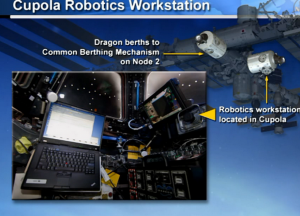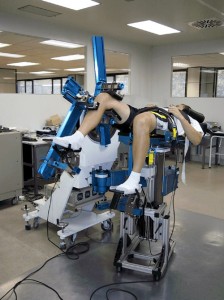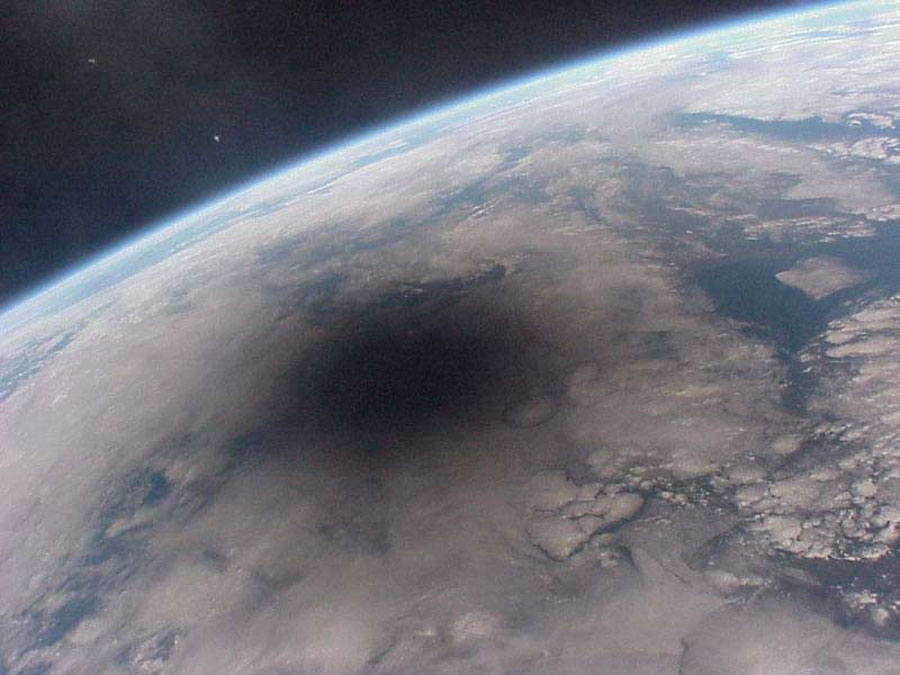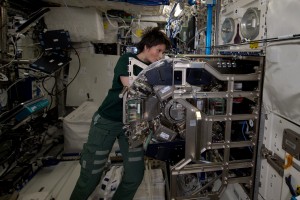Floating ahead…
12/06/2015
12/06/2015
11/06/2015
10/06/2015
06/06/2015
Today at around 17:27 CET ESA astronaut Samantha Cristoforetti will break the record for the longest uninterrupted spaceflight of an ESA astronaut. She was originally planned to return to Earth on 12 May but her Futura mission was extended after a problem with a Progress supply ferry.
The record was held until now by ESA astronaut André Kuipers who spent 193 days in space in 2012 for his PromISSe mission. His mission was also extended after a spacecraft problem. From his blog:
“A leak was found on the Soyuz capsule that was supposed to ferry the Expedition 31 crew up here. So the next Soyuz in line is being prepared quickly. It will not be ready before mid-march so the launch has been delayed by two months. This will delay landing for Dan, Anton and Anatoly. This also has consequences for myself, Don and Oleg. The delay is now six weeks and the official landing date is set for 1 July.”
Neither Samantha or André have the record for the most time an ESA astronaut has spent in space, that record goes to ESA astronaut Thomas Reiter with 350 days spent in space over two missions, 179 on space station Mir in 1995 and 171 on the International Space Station as part of Expedition 2 in 2006.
04/06/2015
Update: Leonardo is now firmly in place attached to the Tranquility node.
Don’t panic! The International Space Station is getting some redecoration as the ~10 000 kg Leonardo module will be moved to a different location today.
The Italian-built Leonardo, also known as the more mundane Permanent Multipurpose Module, will be moved from the Unity module to the Tranquility module from 14:00 CEST. The Canadian-built Canadarm2 will grab Leonardo and transfer it to its new berthing place.
[youtube so_e0RZqnCE]
They closed the hatch between Leonardo and Unity yesterday and made sure there were no leaks. The partners that run the International Space Station are moving Leonardo to make extra room for visiting cargo ferries. Two types of vessels can visit the Space Station, spacecraft that dock automatically and ferries that need to be berthed using the Station’s robotic arm. Moving Leonardo will free up an extra docking port for spacecraft that require berthing with the robotic arm such as Dragon, Cygnus and the Japanese HTV.
Leonardo
The Leonardo module has an interesting history and is one of the reasons Samantha is currently on the Space Station. The module was designed and built in Italy by the Italian Space Agency and Thales Alenia Espace for use on NASA’s Space Shuttle. It’s first name was Leonardo Multi-Purpose Logistics Module as it performed a number of tasks in the Shuttle’s cargo bay. It flew to space and returned seven times between 2001 and 2010.
On its eighth spaceflight it was left permanently attached to the International Space Station in 2011. Since then it is used for storage and as extra space. Its name was subsequently changed to Permanent Multipurpose Module. In return for building and supplying Leonardo and other Multi-Purpose Logistics Modules, NASA agreed that the Italian Space Agency would send astronauts to the International Space Station. One of these astronaut flights arranged under this barter agreement is being filled by none other than Samantha Cristoforetti.
Watch the relocation live on NASA television from 14:00 CET today.
27/05/2015
Practicing emergencies is necessary so I accept that the volunteer fire department near our home at Hochstadt runs their siren in the evening, even though it excites our 3-year-old daughter just before bedtime. We also need to practice emergencies on the International Space Station in space you cannot phone highly-trained rescue workers to come to the rescue. Astronauts must be able to fend for themselves, extinguish a fire and protect themselves from any fumes. Even radio contact with experts in control centers cannot be assumed to work in a worst-case scenario.
In today’s emergency exercise the control centres and astronauts worked together on a so-called On-Board Training or simply OBT. We had “stage directions” that defined for example that a leak would appear in the Japanese Kibo module through which air would escape.
The alarm sounded on the Space Station with its penetrating noise and the computer screens of our Flight Controller filled up with numerous error messages, proving that the International Space Station had configured itself in emergency mode. The astronauts onboard reported shortly afterwards to Mission Control Houston with the news that they had a pressure drop on the Space Station to contend with. All radio communication between crew and flight controllers began with the words “For the workout exercise:” to ensure that everybody knew it was not a real emergency, but an exercise.
The flight director in Houston declared a “Space Craft Emergency” – of preceded by “for the training exercise”. Sinje Steffen of the STRATOS team at the Columbus Control Centre checked whether Columbus was automatically reconfigured for this Rapid Depress scenario.
The astronauts convened in the meantime 350 km above close to their Soyuz spacecraft. Since the Russian capsules are the Station’s lifeboats, each astronaut has a well-defined place there. They are usually the first assembly point of crew in an emergency. Once there, they decide together on how to proceed based on the scheme “Warning – Gather – Fight”. In our emergency script scenario, the astronauts had about five hours until critical low pressure (designated as T.Res) would be reached – time enough to try to find the leaking module and possibly stop the International Space Station from ‘bleeding out’.
The astronauts followed the well-defined sequence to close various hatches to measure on which side the pressure dropped further. Slowly they were able to find their way closer and closer to the actual leak.
Columbus Flight Director Katja Leuoth and her team was busy keeping up with the falling pressure values: a long list of minimum air pressure certification values exist for all Columbus components – each of these elements had to be switched off before their critical pressure was reached. Today’s commands were “for the training exercise”, so actual commands were not issued and power was not actually switched-off…
The rapid pressure-drop (rapid depress) is one of three major emergency scenarios that are defined for the International Space Station.
Depending on the size of the leak, there are various ways to “clog the hole”: from an oversized bicycle-patch to a plasticine-like material. All sealing is done of course from inside the space station – and is easy: Compared to the vacuum of space the pressure inside the ISS is considerable higher and pushes any seal onto the leak – a clear advantage compared to repairing a bicycle inner tube…
Thomas Uhlig, Columbus Control Centre
21/04/2015
I do not know if Samantha loved to catch butterflies as a child… but I am sure she never dreamt of catching a Dragon with a robotic arm!
That is exactly what is going to happen today: she is in charge of grappling the SpaceX Dragon-6 cargo ship from her favourite spot in the Space Station: the Cupola. It is the first time that this task is been given to an Italian astronaut. Samantha assisted her NASA colleague Terry Virts for the last SpaceX docking. If you are curious she wrote about it extensively it in her logbook (link).
The Dragon spaceships perform a “stop and go” dance as they approach the Space Station: it’s all about the team play between the crew onboard and the Control Centres on Earth. After many miles travelled this part of its journey is very delicate. Dragon left Earth on Wednesday. Just ten minutes after launch the cargo spaceship reaches its first orbit and from there it starts its slow approach to the Space Station which lasts a couple of days.

Credits: NASA
When the spaceship starts to ”see” the Space Station is time for the Control Centres (NASA’s one in Houston and the SpaceX’s one in Hawtorne, USA) to fire the engines and gently push the cargo up to 250 metres from the Station’s docking port. Now the Dragon’s eyes are important: a radar system (that works with visible-light wavelength) and an infrared camera. The data from its ‘eyes’ are compared and allow the spaceship’s systems to know precisely its position and speed in relation to the Station. Meanwhile, Dragon and the Space Station are communicate via UHF band. From this moment on, the astronauts operate the SpaceX cargo remotely with the support of the Control Centres on the Ground.
The first stop is at 50 metres from the orbital outpost. Once the OK to proceed comes from ground control the spaceship can move closer. From this point the Dragon enters the so-called “Keep-Out Sphere”. Sounds like science-fiction but it is nothing more than a term to make sure even more caution is heeded: nobody wants a Dragon to collide with the Space Station!
The crew will the bring the Dragon spaceship to within 30 metres and then at 10 metres from the Space Station. Stop and ground control (Hi there Major TomJ)… this is where Samantha’s real work starts today: she will grapple the cargo vessel with the Canadarm robotic arm and… tame the Dragon!
Stefano Sandrelli
17/04/2015
Some operations make us nervous because there is not much about we can do about them from ground. The MARES experiment in the Columbus space laboratory is one of these: it is large, highly complex, equipment and can sometimes be a bit of a problem child.
The Muscle Atrophy Research and Exercise system (MARES) allows us to investigate muscle groups of astronauts and contributes to answering essential questions that arise during long space flights: how does the human body react to weightlessness? How fast to muscles degrade when they are not used in weightlessness?

Muscle Atrophy Research and Exercise System (MARES). Credits: ESA
We think of MARES as a bit of a monster as it fills half of the Columbus module –it takes a while to unpack so each experiment involving MARES takes a long time, afterwards it must be disassembled again. It looks a little like the torture devices that can be found in many fitness centres – this might explain why the flight controllers have so much respect for the machine. It is a mechanically very complex device and any problems astronauts have encountered in the past have proven difficult to solve over the radio…
So it was with a sigh of relief on my part that I was not on console when this was planned to be setup: many hours of astronaut crew time are designated in the timeline to work on MARES. I got nervous again when a colleague fell sick and I had to take over after all …
Ultimately, of course my colleagues and ESA astronaut Samantha Cristoforetti did excellent work: they had to replace a battery (a machine of this size requires more power than Columbus can provide on its own), install a new hard drive and finally test the device for the first time in orbit through by calibrating its servo-motors.
The machine was then put back where every monster belongs, in its “cage”, an experiment cabinet in Columbus – until next time…!Thomas Uhlig Columbus Control Centre
[youtube zpAfrbYtTOs]
Cover picture: Only in Space recommended: four years ago MARES was installed in Columbus – Astronaut Doug Wheelock and proves prowess … (Credits: NASA)
27/03/2015
This Friday, parts of the northern hemisphere will be shrouded in darkness as the Moon moves in between the Sun and the Earth.
For ESA astronaut Samantha Cristoforetti and her crewmates on the International Space Station don’t have to worry about clouds getting in the way of their view. From their orbit above Earth 400 km high they will have a great view of the eclipse.
From around 09:00 UTC the Moon will block alot of the Sunlight from reaching the International Space Station, just missing a total eclipse

Moon’s shadow on Earth during eclipse seen from Russian Mir station in 1999. The shadow moved across our planet at nearly 2000 kilometers an hour.
Credit: Mir 27 Crew; Copyright: CNES
Aside from looking up at the Solar eclipse, Samantha will have another interesting view: if she looks down at Earth she will see the shadow the Moon casts on the clouds and ground. In 1999 astronauts on the Russian space station MIR took this eclipse picture with the spectacular shadow of the Moon on our planet.
At the time of the Solar eclipse Samantha will be working on the Triplelux experiment that is investigating how immune cells adapt to spaceflight. To run this experiment she will put immune cells in a centrifuge and put them 90 minutes later in the Space Station’s freezer for analysis back on Earth.

Samantha using centrifuge in preparation for the Triplelux experiment.
If the experiment runs smoothly Samantha might have time between the two operations to grab a camera and float to the Cupola observatory to take pictures and video of the eclipse.
For us on Earth, we will have to hope for clear skies and follow Samantha on Twitter via @AstroSamantha.
17/03/2015